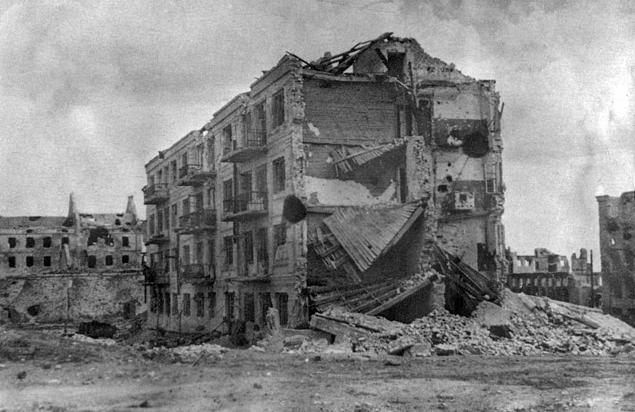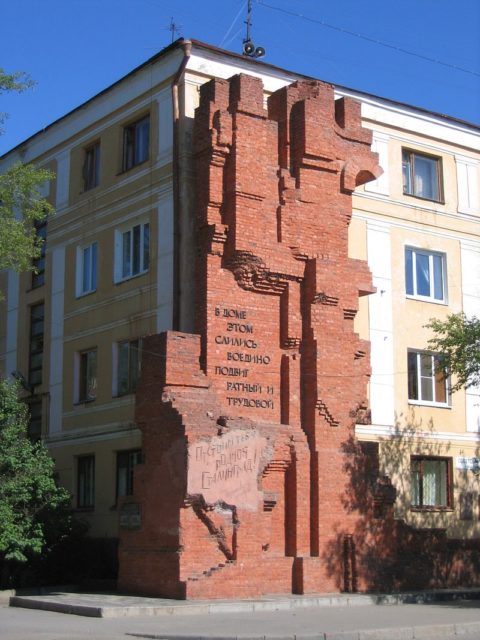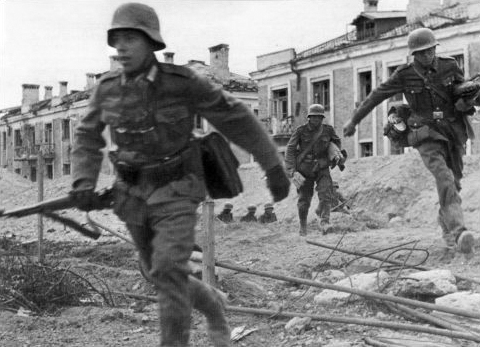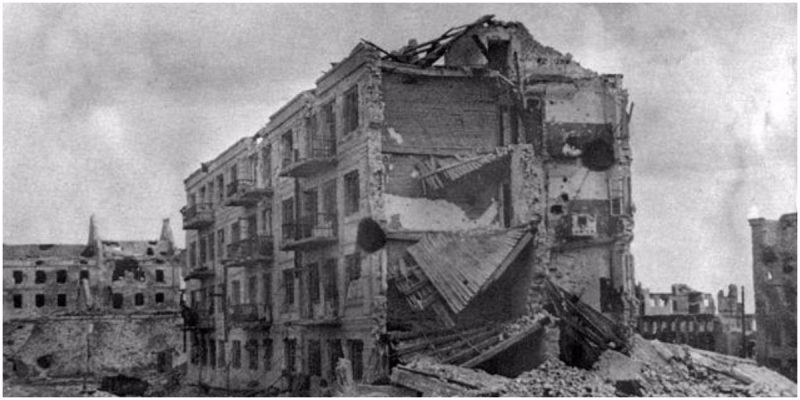The fortified building was named after Sergeant Yakov Pavlov, who had command of the platoon that defended the building from German attack and control of the city of Stalingrad during World War II. The Battle of Stalingrad was a major WWII battle on the Eastern front, where Nazi Germany fought for control of the Soviet city.
The battle lasted from August 23, 1942, to February 2, 1943. The battle was known for close-quarters combat and air raids that directly targeted civilians; it is considered to be the bloodiest and most extensive battle in the history of warfare.

Pavlov’s house was located in the center of Stalingrad and was a key spot in the defense of the Volga bank. It was a four-story apartment block secured from German control by up to 50 soldiers of the 42nd Guards Regiment. The building was fortified with land mines in all of the access ways leading to 9th January Square, which the building overlooked.
Barbed wire was laid around the perimeter, and multiple machine guns, including a PTRS anti-tank rifle, were placed in the windows. At the rear of the building, supply trenches were laid in to help keep the troops supplied with food and ammunition. The defenders had a line of sight to the west, north, and south for 1 kilometer. Stalin’s Order No. 227 of “not one step back” was carried out with gusto by the men, who were not willing to let the Germans pass them by.

The antitank rifle that was on the roof of the building was used effectively to ambush German tanks. The tops of the tanks were made of thin turret roof armor, and the tank weapons could not be raised high enough to fire back at the rifle. The Germans attacked the building multiple times a day but were unable to make it past the machine guns and AT rifle fire that came from every level of the building. The defenders held the building successfully from around the 27th of September to the 25th of November, 1942, until their post was relieved by counter-attacking Soviet troops.
The house became a symbol of the resistance of the people of Stalingrad. It is prominent in history; up till then the German armies were able to conqueror cities in days and weeks, yet they spent two months trying to capture one building and failed.

The apartment building was rebuilt after the war and is still a residential apartment block today. On one wall of the building, there is an attached memorial made from bricks to commemorate the battle.
Pavlov was badly wounded in defense of the building but recovered and went on to continue the fight against Nazi Germany. He died in 1981 and held the title “Hero of the Soviet Union”.
